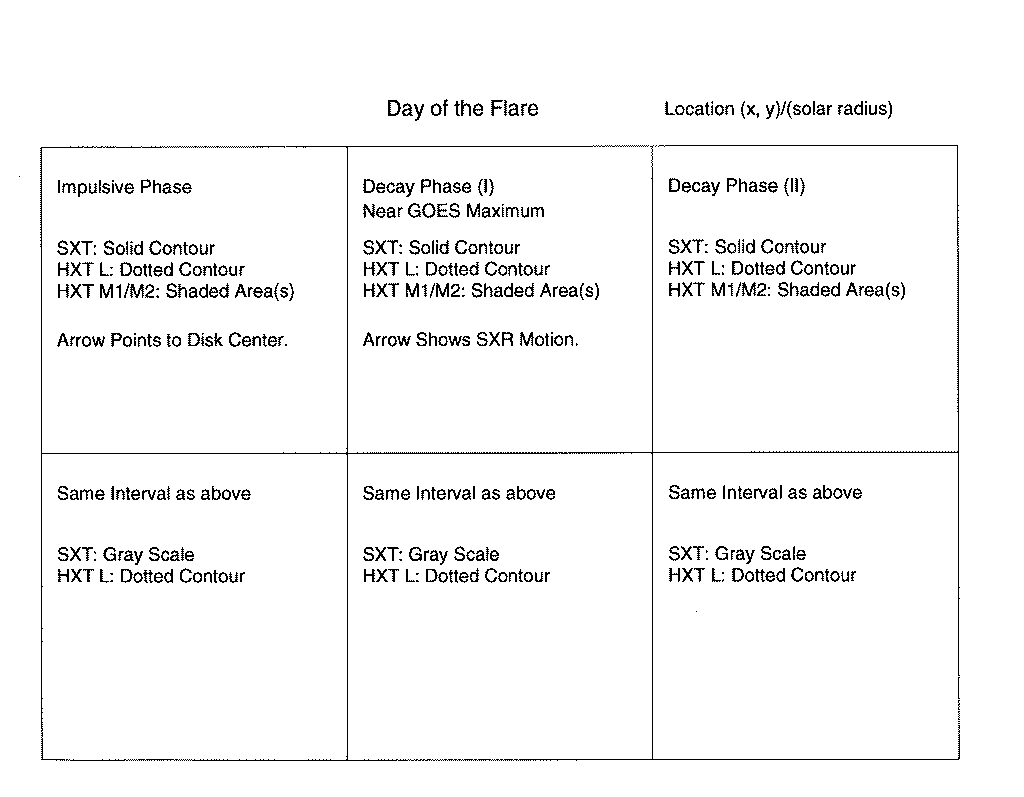 Format of figures
Format of figuresScientists who are experts on solar flares believe that most of the 10-20 MK plasma must originate from the chromosphere, which is heated from above. But the origin of the superhot plasma is still unknown. Some speculate that it is a signature of heating of the material already present in the corona. More importantly, some reconnection models of solar flares predict the superhot plasma above the soft X-ray loop, which is filled with the 10-20 MK plasma (e.g., [3] , [4] .)
SXT images of a typical flare do not show such high temperatures as 30 MK. This is understood in terms of the presence of cooler plasma in the line of sight coupled with the broad temperature sensitivity of SXT (c.f., [5] .) But the low-energy channels of the Yohkoh Hard X-ray Telescope (HXT) are quite sensitive to the superhot temperature range. They are the L-band (14-23 keV) and the M1-band (23-33 keV).
I have looked at 36 flares that are known to be generally hot in terms of spatially unresolved soft X-ray measurements. For each flare, HXT and SXT images are coaligned that were taken during the impulsive phase, and two times in the decay phase. I also measured the motion of the brightest area in soft X-ray images. Higher-energy hard X-ray images are also indicated wherever available. The M2-band is in 33-53 keV. See the following figure for the format.
The findings are summarized as:The results are consistent with the presence of the superhot plasma outside the dense flare loop. The flares that show the superhot plasma cospatial with the bright soft X-ray source has the loop geometry in which both are included in the same line of sight. It is difficult to see the superhot plasma with HXT in the early phase of a flare, because other parts (notably the footpoints) are already bright, and the limited dynamic range prevents us from imaging a possibly diffuse hot area outside the loop.
So far the analysis has included only those flares known to be hot on average. But the presence/absence of the superhot plasma may be a key factor for different types of geometry that lead to magnetic reconnection [7] .) If such a classification is valid, we would expect ejections (see a previous nugget) with all the flares analyzed here. That is unfortunately not the case. More results will follow shortly.
 Sakao's scheme of two types of geometry
Sakao's scheme of two types of geometry
What we cannot do with the present instrumentation is spatially resolved accurate spectroscopy, making it still ambiguous whether the soft spectrum seen with HXT in these flares is thermal or nonthermal. More importantly, it is very important to observe the superhot plasma (which would be not dense) early in the flare. We hope that HESSI (to be launched in July 2000) will solve at least part of these problems.
26 November 1999
Nariaki Nitta (nitta@isass1.solar.isas.ac.jp)